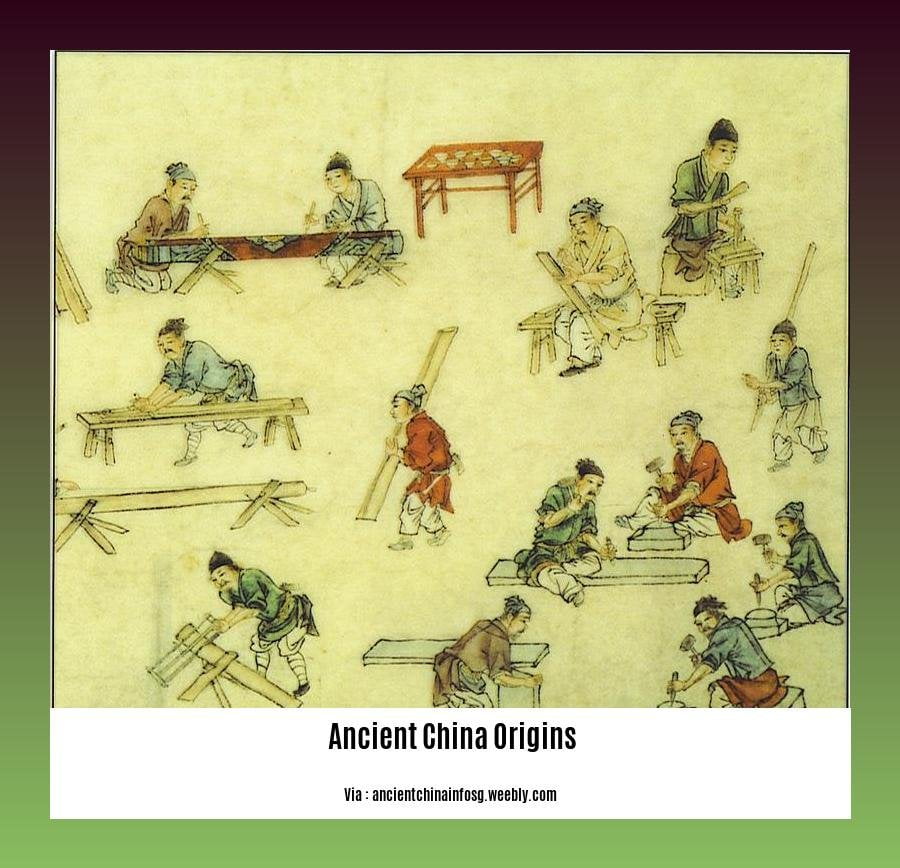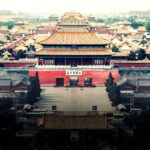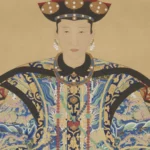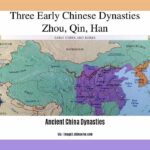Embark on a captivating journey through time as we delve into the origins of ancient China in “The Origins of Ancient China: A Historical Exploration.” Join us as we uncover the enigmatic beginnings of this remarkable civilization, tracing its roots through archaeological discoveries, ancient texts, and cultural relics. Prepare to be transported to a world of emperors, dynasties, and groundbreaking innovations that shaped the course of human history.
Key Takeaways:
- Neolithic era saw the origins of Chinese civilization near the Yellow River and Yangtze River valleys.
- The cradle of Chinese civilization is considered the Yellow River region.
- The Shang dynasty, dating from 1600-1046 BC, is credited with the earliest written Chinese records.
- The Huaxia tribe, near Beijing, is thought to be the source of Chinese culture before the Shang Dynasty.
Ancient China Origins: A Journey into the Cradle of Civilization
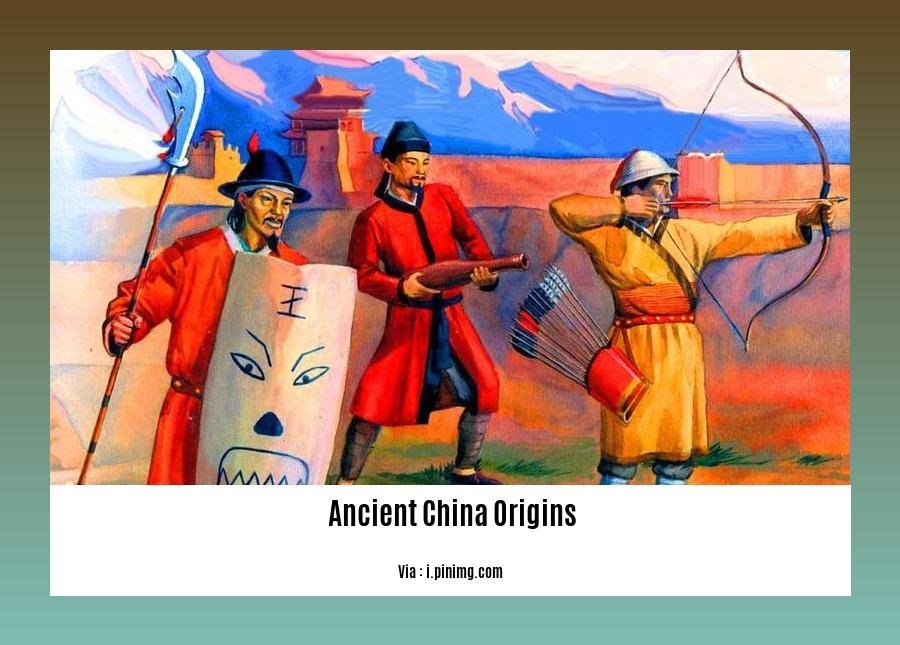
Picture this: the banks of the mighty Yellow River and the Yangtze River, teeming with life thousands of years ago. It was here, in this fertile cradle, that ancient China origins began.
The Neolithic era witnessed the emergence of early Chinese settlements, laying the foundation for a civilization that would shape the course of human history. The Huaxia tribe, believed to be the progenitors of Chinese culture, resided near present-day Beijing during this time.
As we fast forward to the Shang dynasty (1600-1046 BC), we encounter the dawn of written records in Chinese history. Oracle bones, inscribed with questions to the divine, provide tantalizing glimpses into the beliefs and practices of this enigmatic era.
Key Milestones in Ancient China Origins:
| Dynasty | Period | Significance |
|---|---|---|
| Neolithic | 10,000-2,000 BCE | Early settlements, agriculture, pottery |
| Xia | 2070-1600 BCE | Legendary dynasty, first recorded in ancient texts |
| Shang | 1600-1046 BCE | First written records, bronze technology, oracle bones |
| Zhou | 1046-256 BCE | Feudal system, spread of Chinese culture |
Legacy of Ancient China Origins:
The foundations laid during ancient China origins reverberate through time. The written language, the concept of centralized rule, and the advancements in science and technology continue to shape the world we live in today.
From the Great Wall of China to the timeless philosophy of Confucius, ancient China origins stand as a testament to the enduring spirit of human ingenuity and innovation.
Expand your knowledge on the fascinating history of fireworks by delving into history of fireworks.
Discover the remarkable transformation of fireworks through the lens of European adaptation.
Explore the cutting-edge advancements that have shaped modern pyrotechnics and delve into the intricate artistry of modern pyrotechnics.
Political and Cultural Consolidation: Zhou Dynasty and the Spring and Autumn Period
The Zhou Dynasty and the Spring and Autumn Period marked a pivotal era in ancient China’s history, characterized by significant political and cultural shifts.
Political Fragmentation and the Rise of Feudal Lords
The once-mighty Zhou Dynasty began to weaken, leading to a decline in the central authority of the Zhou king. This resulted in the emergence of powerful feudal lords who ruled over smaller states.
As feudal lords gained more autonomy, they engaged in frequent warfare and formed alliances to protect their interests. This intense power struggle created a fragmented political landscape.
Cultural Flourishing
Despite the political fragmentation, the Spring and Autumn Period witnessed a cultural flourishing within feudal states. Arts, literature, and philosophy blossomed as localized interests took precedence.
The decentralized power structure allowed for greater freedom of thought and expression, leading to the development of influential thinkers such as Confucius and Laozi.
Literary Legacy
The Spring and Autumn Annals, a significant historical record from this period, provides valuable insights into the political and cultural events of the time.
Key Takeaways:
- The Zhou Dynasty weakened, leading to political fragmentation and the rise of feudal lords.
- Warfare and alliances became prevalent during the Spring and Autumn Period.
- Despite political division, the period saw a cultural flourishing in feudal states.
- The Spring and Autumn Annals offers a glimpse into the history of this era.
Citation:
- Early China: The Spring and Autumn Period
- Zhou Dynasty: Spring and Autumn Period
Emergence of Warring States and the Qin Empire
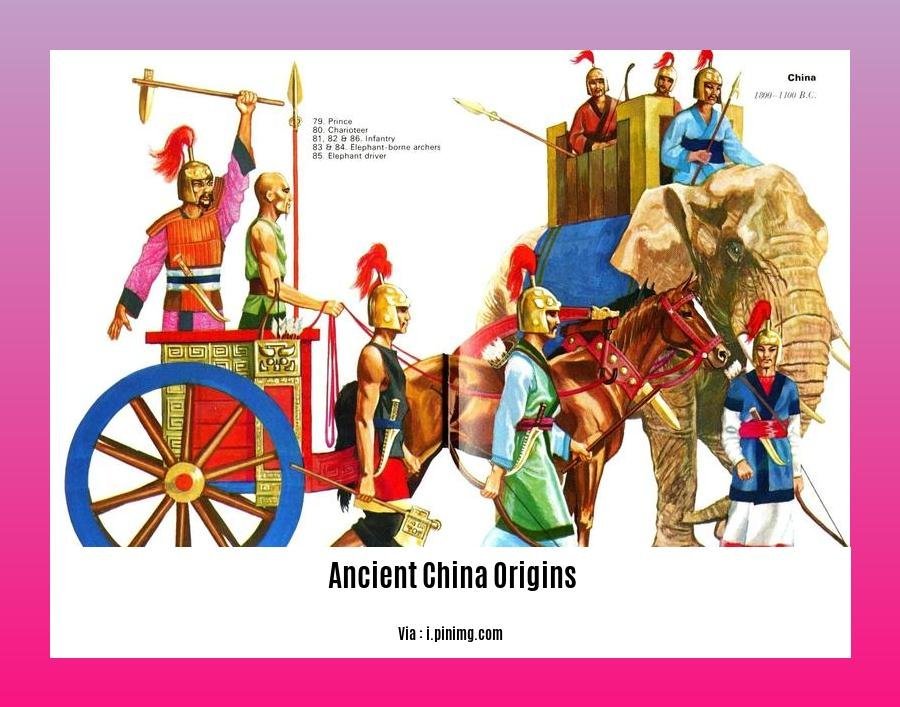
China’s history took a tumultuous turn during the Emergence of Warring States and the Qin Empire. Around 400 BCE, the Zhou Dynasty’s grip on power weakened, leading to a chaotic era of warfare and alliances.
Fierce battles raged as smaller states vied for supremacy. However, two states stood out amidst the chaos: Qin and Chu.
Qin’s Rise to Dominance:
- Qin implemented a series of reforms that strengthened its military and economy.
- Under Qin Shi Huang, the first emperor, Qin launched a series of conquests, eventually defeating the other warring states.
Establishment of the Qin Empire:
- In 221 BCE, Qin Shi Huang unified all of China, establishing the first imperial dynasty.
- The Qin Empire introduced standardized laws, a unified currency, and a centralized bureaucracy.
- Despite its short reign (221-206 BCE), the Qin Dynasty laid the foundation for Imperial China.
Key Takeaways:
- The Warring States period was a time of intense warfare and political instability.
- Qin’s military reforms and conquests propelled it to dominance.
- Qin Shi Huang unified China, establishing the first imperial dynasty.
- The Qin Empire introduced major administrative and economic changes that shaped Chinese civilization.
Relevant URL Sources:
Legacies and Enduring Influence of Ancient China
Ancient China, a cradle of civilization, has left an indelible mark on the world stage. Its impact reverberates through history, shaping countless aspects of modern society.
Legacy of Ingenuity:
* Inventions and Innovations: The Chinese pioneered groundbreaking inventions like papermaking, gunpowder, and the compass. These innovations transformed human civilization, facilitating communication, warfare, and exploration.
* Technological Prowess: Ancient Chinese engineers constructed marvels like the Great Wall and the Terracotta Army, testaments to their architectural brilliance and engineering skills.
Intellectual and Cultural Heritage:
* Written Language: The development of the Chinese writing system enabled the preservation and transmission of knowledge and culture.
* Philosophy and Thought: Chinese philosophers such as Confucius, Laozi, and Mozi profoundly influenced ethical, moral, and political thought globally.
* Arts and Aesthetics: The Chinese excelled in painting, calligraphy, ceramics, and music. Their artistic traditions have inspired generations of artists worldwide.
Social and Political Structures:
* Centralized Rule: Ancient China established a centralized imperial system, promoting stability and fostering cultural unity.
* Feudal System: The feudal system of the Zhou dynasty laid the foundation for social hierarchy and governance, shaping Chinese society for centuries.
* Legalism: The legalist philosophy emphasized strict laws and harsh punishments, influencing political thought and governance practices.
Scientific and Medical Advancements:
* Astronomy and Mathematics: Chinese astronomers made significant contributions to celestial observation and mathematical calculations.
* Medicine and Health: Ancient China developed a sophisticated system of traditional medicine, including acupuncture, herbal remedies, and disease prevention methods.
Key Takeaways:
- Ancient China’s legacies include groundbreaking inventions, a sophisticated written language, profound philosophical thought, and advanced social and political structures.
- These legacies have had an enduring influence on world civilization, shaping everything from technology to art, philosophy to medicine.
- The ingenuity, intellect, and cultural achievements of ancient China continue to inspire and enrich humanity today.
Citations:
* Disentangling the cultural evolution of ancient China: a digital perspective
* The Enduring Legacy of Ancient China
FAQ
Q1: What are the earliest known written records of Chinese history?
A1: The earliest known written records of Chinese history were produced during the Shang dynasty (1600-1046 BC).
Q2: What is considered the cradle of Chinese civilization?
A2: The Yellow River region is considered the cradle of Chinese civilization.
Q3: What is the significance of the Spring and Autumn Period?
A3: The Spring and Autumn Period (770–476 BC) was a time of cultural flourishing and political fragmentation in ancient China.
Q4: Which two states emerged as supreme during the Warring States period?
A4: Qin and Chu emerged as supreme during the Warring States period (c. 481-221 BCE).
Q5: What dynasty is credited with uniting the separate states of China?
A5: The Qin Dynasty (221-206 BCE) is credited with uniting the separate states of China and establishing the first unified Chinese empire.
